If you’ve never tried Fried Walleye you don’t know what you’re missing! This mild white fish, deep fried to a golden brown is crunchy, crispy on the outside, and moist and flaky on the inside.
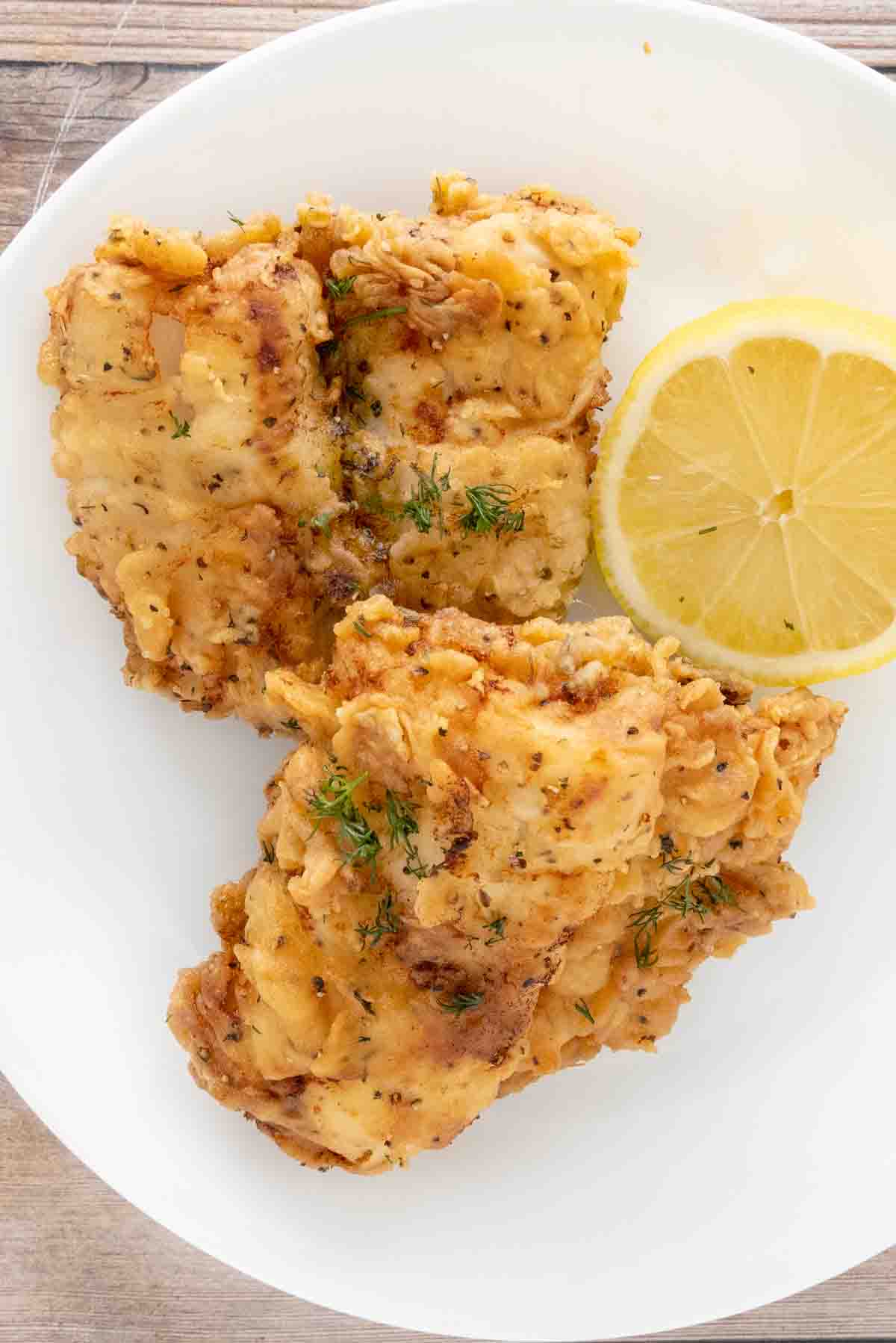
The buttermilk marinade adds flavor to the filets and keeps them moist and tender during the deep-frying process. It also helps the flour to adhere to the fillets, creating the crispy, crunchy coating we all love.
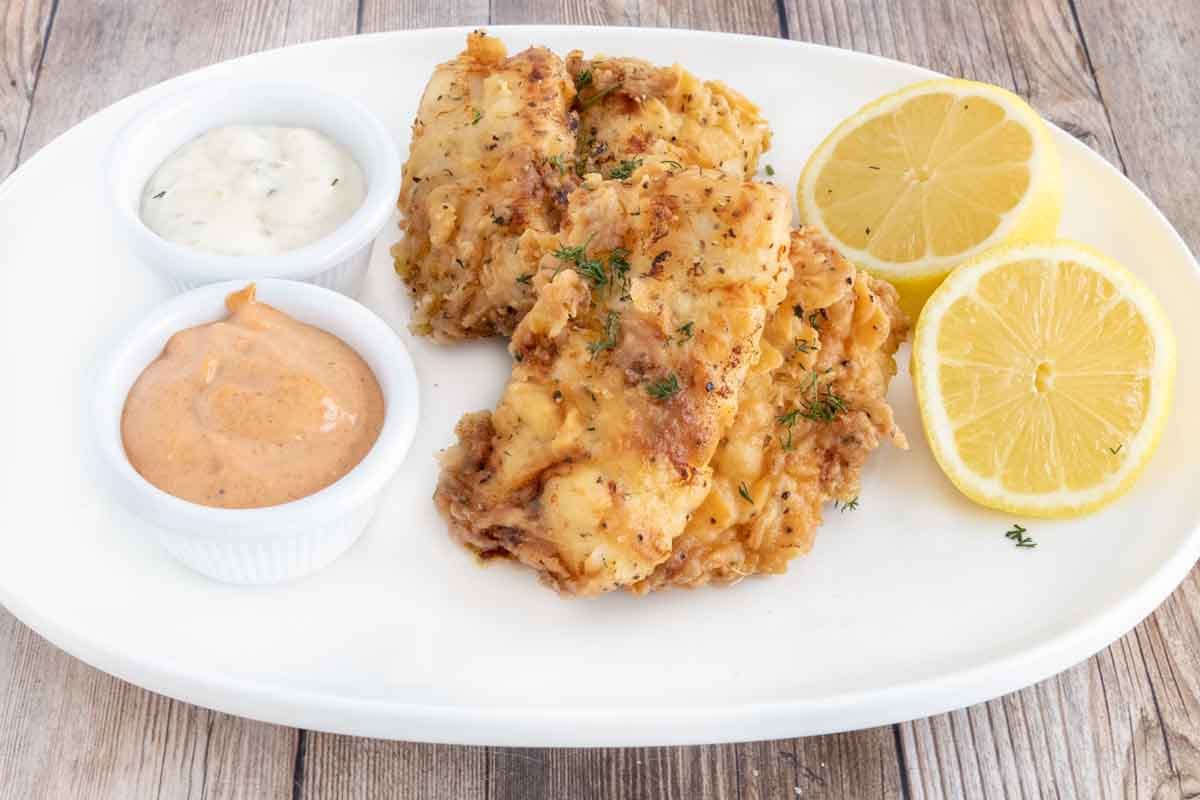
Serve these delicious fried walleye fillets with your favorite sauces, (I served it with my yum yum sauce) or on a bun with tartar sauce to make a classic fish sandwich.
You can also cut the fillets into smaller pieces for fish tacos, or cut them into strips to make fish sticks.
If you love fried fish make sure to check out our Fried Flounder and Fried Catfish recipes.
Ingredients to make Fried Walleye
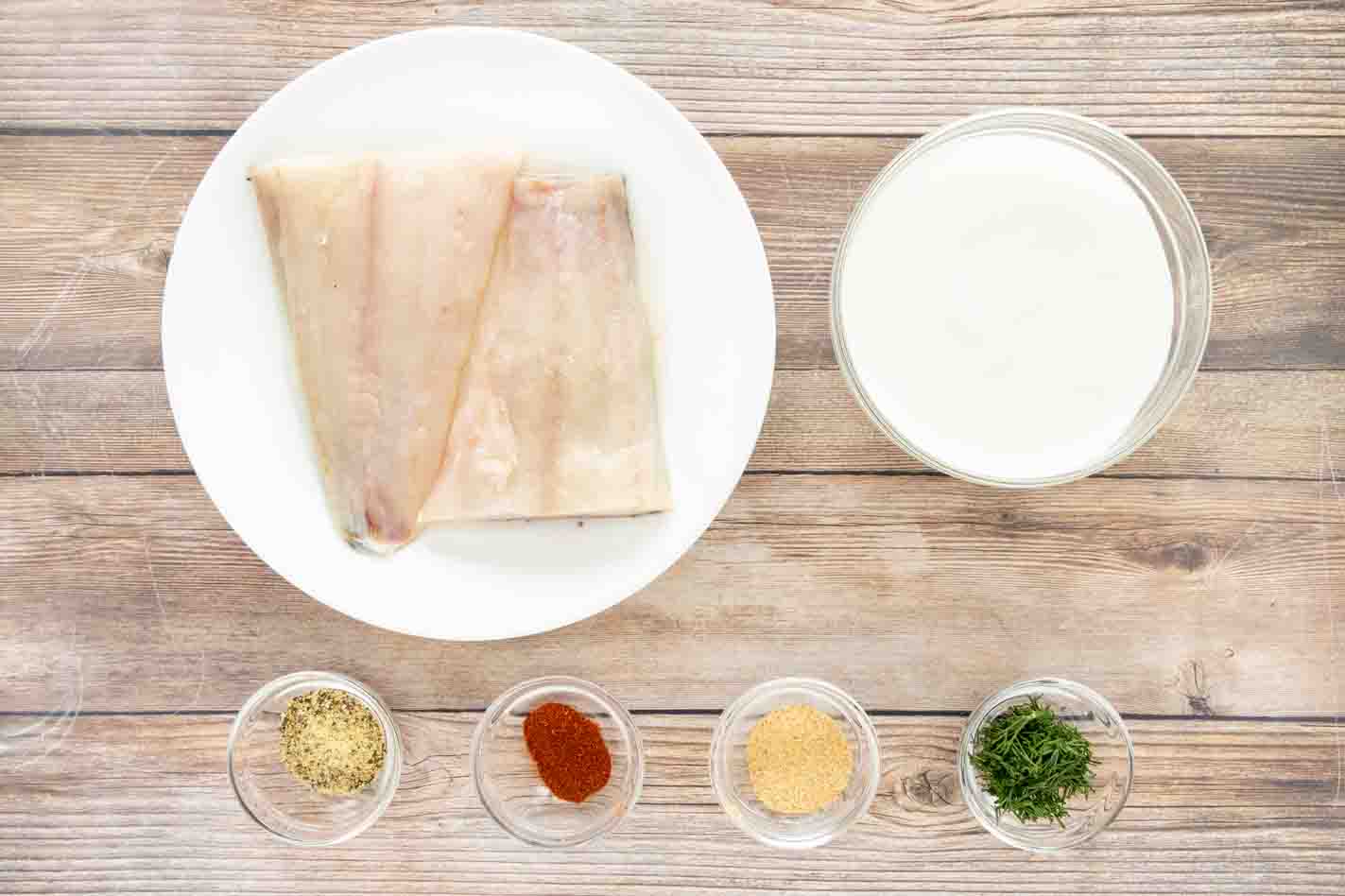
Let’s start by gathering the ingredients needed to make my Fried Walleye recipe. In Chef Speak, this is called the Mise en Place, which translates into Everything in its Place.
Not only does setting your ingredients up ahead of time speed the cooking process, but it also helps ensure you have everything you need to make the dish.
What oil should I use to fry seafood?
You want to use cooking oils with a high smoke point. Soybean oil (usually labeled as vegetable oil), canola oil, peanut oil, safflower oil, avocado oil, or grapeseed oil are all good choices.
Their higher smoke points allow you to fry at 375 degrees, creating crispy (not greasy) fried foods.
*Chefs generally choose soybean, or canola oil for frying.
How to make Fried Walleye
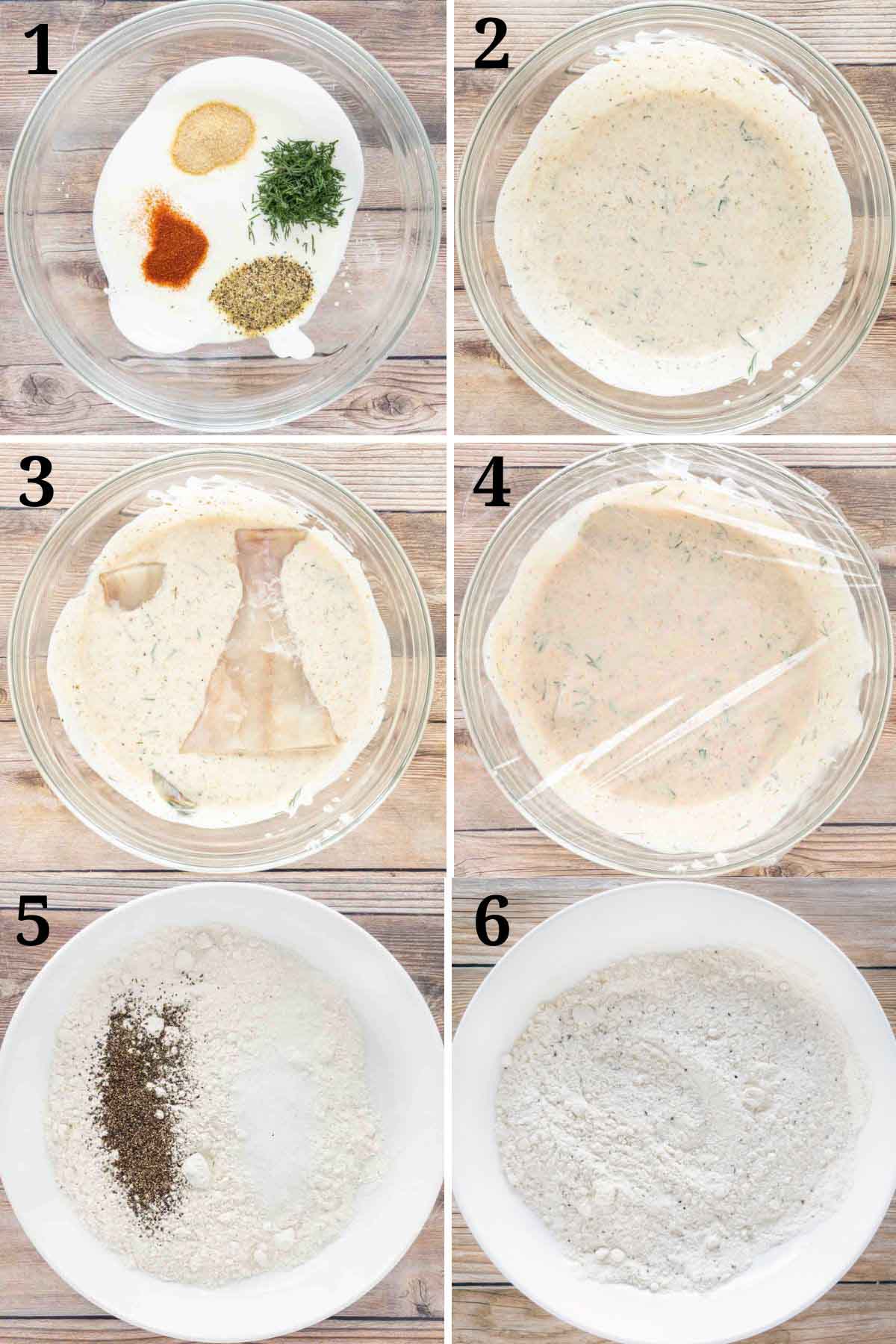
- Add the buttermilk, fresh dill, garlic powder, lemon pepper, and sweet paprika to a small mixing bowl.
- Whisk to combine the buttermilk marinade.
- Add the fresh walleye filets to the buttermilk mixture, making sure they are fully submerged.
- Cover the bowl with plastic wrap and refrigerate for at least 30 minutes, up to 2 hours.
*The longer you can let the fish marinate, the better the flavor of the walleye will be. Just don’t go over 2 hours or the fish will get mushy. - Add the all-purpose flour to a shallow bowl (or zip-lock bag); season with salt and black pepper.
- Whisk to combine.
Remove the fish from the refrigerator 15 minutes before frying to let it come to room temperature.
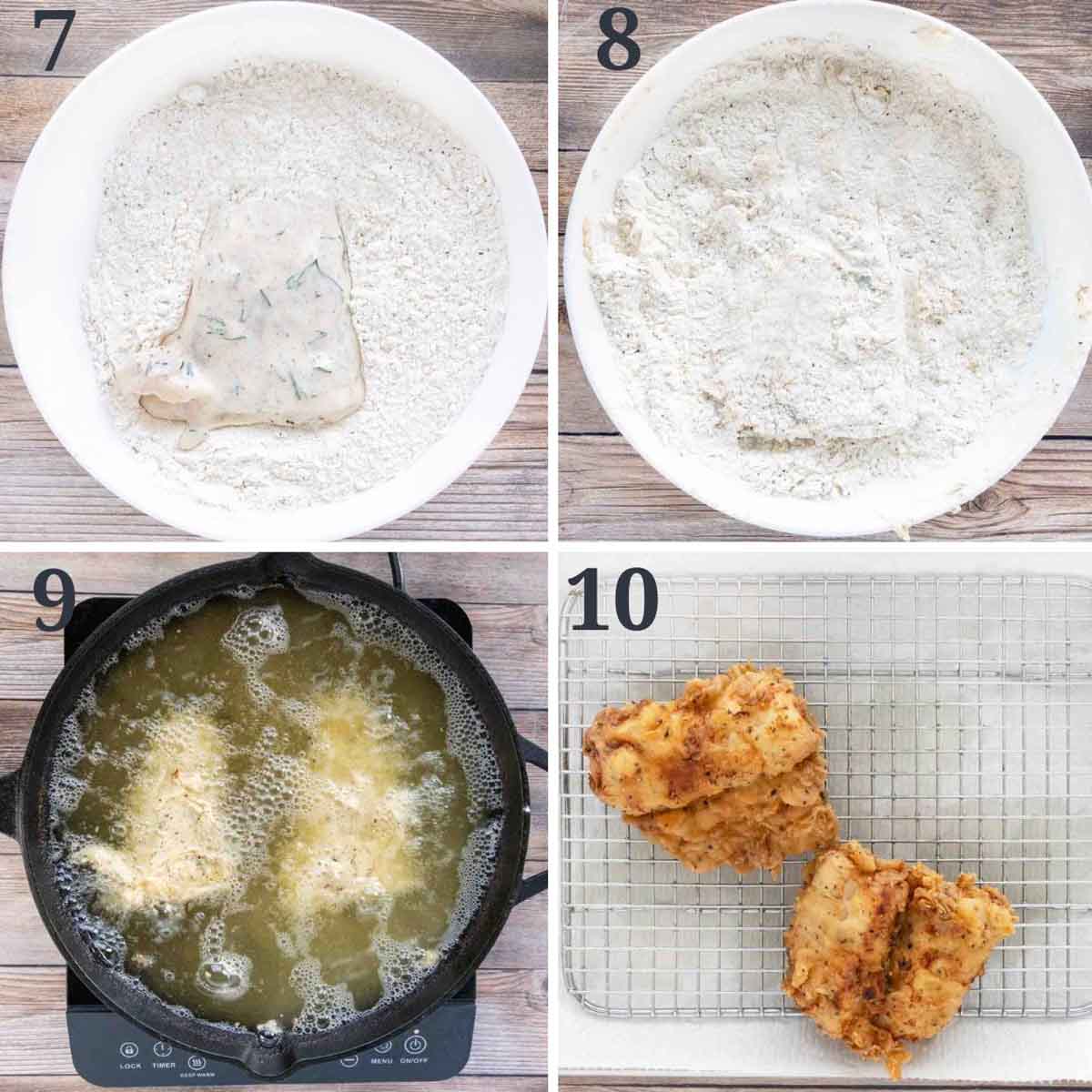
Add 1 ½ – 2 inches of vegetable oil to a large skillet (or deep cast iron frying pan) over high heat, and heat the oil to 375 degrees F.
- Use tongs to remove the fish fillets from the buttermilk mixture, letting any excess buttermilk drain off the fish. Then, place the fish in the flour mixture, coating the entire filet with the flour mixture.
- After the initial coating, press the fish down into the flour to make sure the entire filet is well coated.
- Shake off any excess flour; add the floured fish to the hot oil and let it cook for 5-6 minutes. Then carefully turn the fish over and let it continue to cook for an additional 3-5 minutes or until the internal temperature is 145 degrees F. and the fish is golden brown.
- Place the fried fish on a draining rack or paper towels to allow the excess grease to drain off.
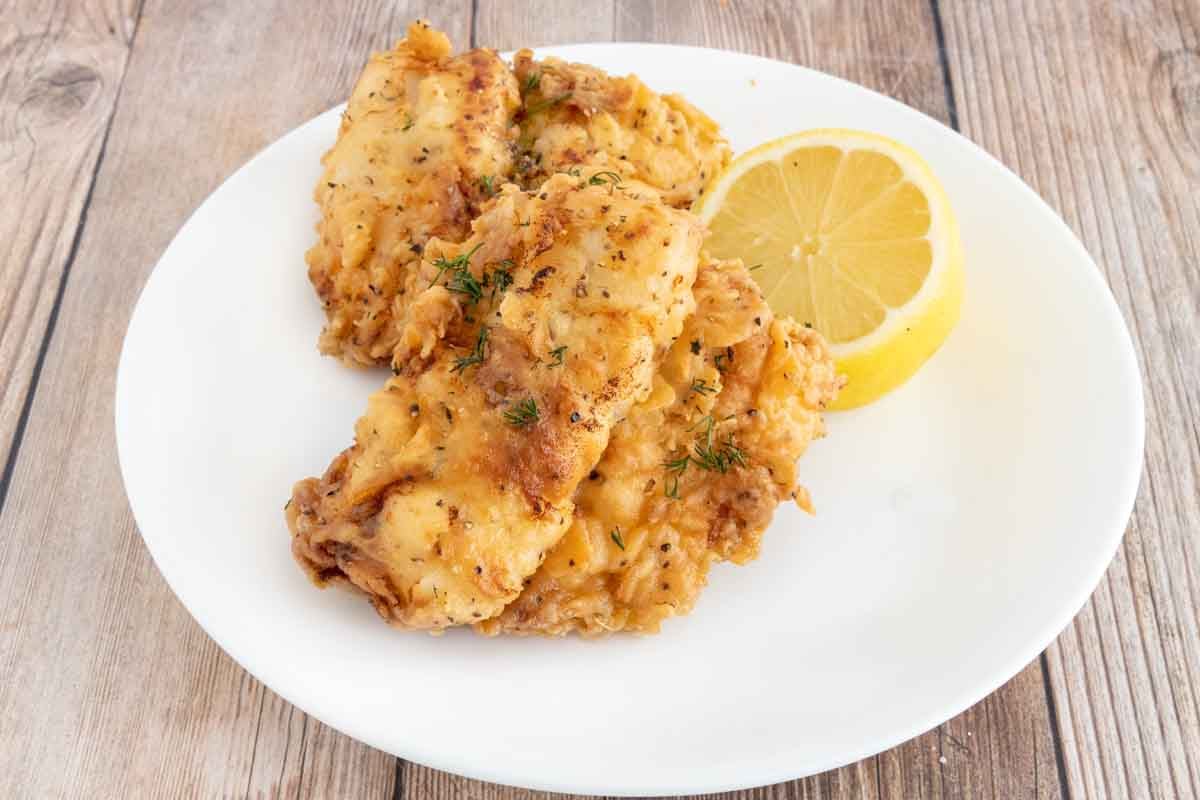
Serve the walleye with lemon wedges, tartar sauce, cole slaw, roasted potatoes, or your favorite sides.
Save any leftover fried walleye refrigerated in an airtight container for 2-3 days. Reheat the fish in a 400-degree oven (or toaster oven) for 10 minutes or until the internal temperature is at least 165 degrees F.
Recipe FAQ’s
Fish and other seafood should be cooked to an internal temperature of 145°F. At this temperature, fish will develop an opaque, and the meat will be flaky.
Walleye is a freshwater fish found in lakes in the Northwestern area of the United States. It’s prized for its delicate flavor and firm texture. It’s often considered one of the best-tasting freshwater fish.
Making sure that your oil is at the correct temperature (around 350-375°F or 175-190°C) is crucial to keeping your fish from becoming greasy. Overcrowding the pan will drop the temperature of the oil which can also make your fish greasy. Fry the fish in batches, so the oil temperature doesn’t drop too much. Draining the fish on paper towels or a wire rack will also help remove excess oil

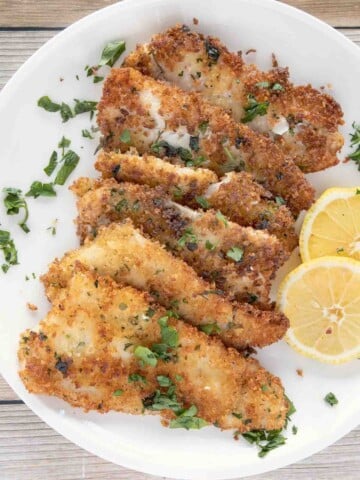
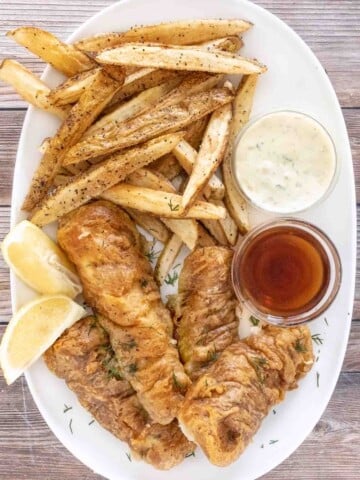
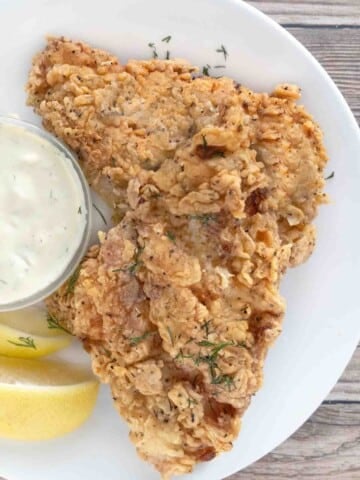
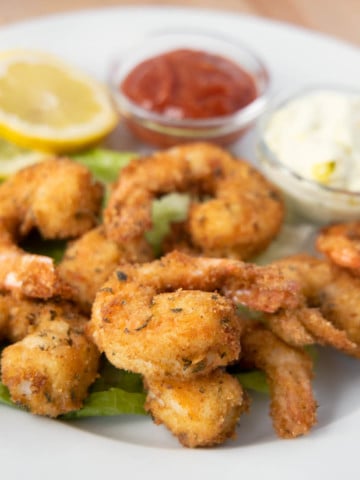

Larry says
Our local lakes have walleye and I used to occasionally get a special gift of some and always loved it. It’s been several years and you post makes me want to grab a rod and head for the lake.